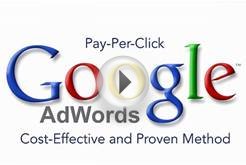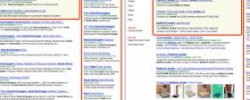Continuing my analysis of common website and social media mistakes, it's time for me to address typical Google AdWords campaign errors that can literally cost you thousands of dollars if left unchecked.
1. Choosing the Wrong Keywords
Many advertisers think there's no harm in having countless keywords in their campaigns just to cover their bases, but this is false logic. First of all, having too many non-performing keywords in your campaign can actually bring your overall campaign down, which in turn can lead to increased expenses to generate the same results.
Second of all, if you focus on only choosing keywords that generate clicks but no conversions, you're helping Google make a tidy sum off of you without helping yourself.
Lastly, certain words with multiple meanings might also bring down your campaign performance if the ad is served a lot but not clicked or could lead to wasted expense. Take for example the word "windows." In the example below, an ad for Microsoft Windows (software) appears among all other ads for glass windows for a building. Perhaps this ad is appropriately located (and if you have the advertising budget of Microsoft, you probably don't care), but also considering that Microsoft Windows has the No. 1 free organic search ranking on Google, perhaps it's an unnecessary placement.

2. Writing Bad or Boring Ad Copy
Some AdWords copywriting tips include:
- a headline with specific content, messaging or an offer
- use of your keyword somewhere in the ad copy
- a persuasive call to action like "Save now, " "Buy our..." or "Register here"
3. Not Fully Understanding or Using All Campaign Set-up Options
Google makes basic campaign set-up easy, but they don't necessarily expose all the different ways you can configure and manipulate your campaign to help improve results. Educate yourself on the use of these features to get more results for the same or less money:
- AdGroups-the grouping of like or objective-related keywords into a group so you can impose campaign controls at the Group level
- Ad targeting-there are so many fabulous ways to target better through AdWords-by keyword (of course), by geography, by time of day ("day-parting"), by content, by mobile users-take time to become familiar with all of the targeting methods so you can optimize your campaign and maximize your budget
- Match types-match types tell Google under what conditions of a search query to serve your ad. There are five main types of match types: Broad, Broad Modifier, Phrase, Exact, and Negative. Get familiar with how each type works to improve your campaign.
- Keyword insertion-with keyword insertion, Google inserts your select keyword into your ad text on-the-fly to try to make it more relevant for the user. You typically see this with big box retailer ads, for example:
4. Not Implementing Conversion Tracking
Without conversion tracking, you probably don't have a clear sense of which keywords are generating desired actions for campaign success. Google provides conversion tracking code for free.
5. Not Tying Your Conversion Tracking Into Your Google Analytics
Speaking of free, Google Analytics is one of the most powerful marketing tools out there, and it too is free. As a bonus, if you connect your AdWords conversion tracking to your Google Analytics, you can see all kinds of data your campaign is generating.
6. Unnecessarily Over-paying for Positioning
Most Google advertisers understand that AdWords is a live, 24/7 auction by keyword-the cost of your click is influenced by what all advertisers bidding on it are willing to pay. When you have a well-optimized campaign, chances are you don't have to pay top dollar to capture the first ad position...and nor does the number one position always suit you, the advertiser, best. You need to understand how the entire AdWords marketplace works, including Google's Quality Score, and how to best manage your campaign by keyword or goal.
7. Sending All the Traffic to Your Website's Homepage
Most campaigns benefit from driving traffic to unique "landing pages" where the searcher can more easily connect with the information they seek, rather than dumping them onto the homepage of your website and hoping they find what they came to your site for.
8. Not Conducting A/B Split Tests
Split testing allows you to serve two different versions of ad copy for the same keyword, or to take visitors to two different landing pages, all so you can test if one version of ad copy or landing page clearly outperforms another.
If you're managing your AdWords campaign yourself, it will be easier for you to tackle these fixes one at a time than all at once. Along the way, see how they improve your campaign performance...but don't forget to capture baseline performance metrics so you have something to judge against!









